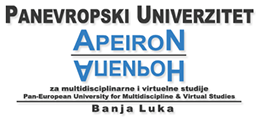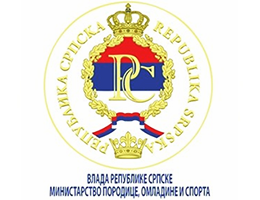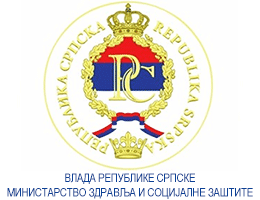Development of an External Load Physical Training Model to Increase Strength in Shotokan Karate
Volume 15, Issue 1 (2025)
Volume 15, Issue 1 (2025)
Development of an External Load Physical Training Model to Increase Strength in Shotokan Karate
Apstrakt:
This research aims to determine the effect of the developed external load physical training model on efforts
to increase strength in the sport of shotokan karate. The participants in this study were 20 shotokan karate athletes and
students at Universitas Negeri Makassar. This research was conducted on the Universitas Negeri Makassar campus for
three months. The research design used was research and development (R & D) with a purposive sampling technique. We
also conducted experiments to measure the effectiveness of the external weight training model we developed. Participants
were given treatment in ten meetings. To measure the level of improvement in the treatment given, we conducted a pre-test
and post-test in the experimental group. The results showed that the external load physical training model proved effective
in increasing strength in shotokan karate athletes. Of course, after going through the revision stages to perfect the training
model. Therefore, we recommend that future researchers re-test the effectiveness of the external load physical training
model that we developed with other research methods to test the validity and reliability of this training model.
Ključne riječi:
External weights, Karate shotokan, Model training.
Puni tekst:
Reference:
A.susanto. (2021). Filsafat Ilmu Suatu Kajian dalam Dimensi Ontologis, Epistemologis, dan Aksiologis (a.susanto (ed.)). pt bumi aksara.
Asnaldi, A. (2015). Analisis Kondisi Fisik Dalam Cabang Olahraga Karate. Ilmu Olah Raga: Jurnal Ilmu Keolahragaan Dan Pendidikan Jasmani,
24(29), 13–28. http://repository.unp.ac.id/16173/1/SPORT-29.pdf
Behm, D. G., Young, J. D., Whitten, J. H. D., Reid, J. C., Quigley, P. J., & Low, J. L. (2017). Effectiveness of Traditional Strength vs.
Power Training on Muscle Strength, Power, and Speed with Youth: A Meta-Analysis. Frontiers in Physiology, 8, 423. DOI: 10.3389/
fphys.2017.00423
Bishop, D., Jones, E., & Woods, D. R. (2006). Recovery from training: A brief review. Journal of Strength and Conditioning Research, 20(3),
657-664.
Bompa & Buzzichelli. (2019). Periodisasi: Teori dan Metodologi Pelatihan. Dalam sistem komunikasi dan informasi Nuevos.
Borg, WR, & Gall, MD (2017). Educational Research An Introduction (Edisi ke-7) oleh Meredith D. Gall, Walter R. Borg, Joyce P. Gall (z-lib.
org).pdf (hal. 683).
Chaabène, H., Hachana, Y., Franchini, E., Mkaouer, B., & Chamari, K. (2012). Physical and Physiological Profile of Elite Karate Athletes.
Sports Medicine, 42(10), 829–843. DOI: 10.2165/11633050-000000000-00000
Didik Zafar Sidik, MP (2019). Pelatihan Kondisi Fisik. PT. Remaja Rosdakarya.
Einer, MIK (2016). Dampak Latihan Back Squat dan Leg Press terhadap Kekuatan Maksimal dan Parameter Kecepatan-Kekuatan. 30(5),
11–13
Haff, G. G., & Triplett, N. T. (2016). Essentials of Strength Training and Conditioning (4th ed.). Human Kinetics.
Harsono. (2016). Latihan Kondisi Fisik Untuk Atlet Dan Kesehatan. (Indra, Red.). Bandung: Modul Pasca Sarjana UPI.
Kumashiro, S. (2004). Karate-Do: My Way of Life. Kodansha International.
Maifitri, F. (2012). Pengaruh Latihan Beban Menggunakan Bench Press Terhadap Daya Ledak Otot Lengan Atlet Karate. Jurnal Majalah Ilmiah,
25(2), 138–148.
Nusufi Maimun, Rinaldy Alfian, W. Friyo. (2019). Evaluasi Kondisi Fisik Dominan Atlet Karate- Do Doo Lanal Inkai KOta Sabang 2015.
Jurnal Informasi dan Pemodelan Kimia, 53(9), 1689–1699.
Nakayama, M. (1978). Karate-Do: My Way of Life. Kodansha International.
Soriano, M. A., Jiménez-Reyes, P., Rhea, M. R., & Marín, P. J. (2015). The Optimal Load for Maximal Power Production During Lower-Body
Resistance Exercises: A Meta-Analysis. Sports Medicine, 45(8), 1191–1205. DOI: 10.1007/s40279-015-0324-8
Susanto, S. et al. (2022). Traditional Sport-Based Physical Education Learning Model in Character Improvement and Critical Thinking of
Elementary School Students. SPORTS SCIENCE AND HEALTH, 24(2), 165-172.
Susanto, S., Setyawan, H., García-Jiménez, J. V., Pavlovic, R., Nowak, A. M., & Susanto, N. (2024). Analysis of One-Hole Game Tools in
Developing Fine Motor Skills in Early Childhood. SPORTS SCIENCE AND HEALTH, 27(V), 135-139.
Susanto, S., Setyawan, H., Susanto, N., García-Jiménez, J. V., Latino, F., Tafuri, F., & Eken, Ö. (2024). The Influence of Modified One-Hole
Game Media in Improving Fine Motor Skills in Early Childhood. SPORTS SCIENCE AND HEALTH, 27(V), 151-156.
Susanto, S. (2024). The Effect of Using a Paralon Bow on the Archery Performance of Novice Athletes. Innovative: Journal Of Social Science
Research, 4(3), 11185-11197.
Susanto, S., Siswantoyo, S., Prasetyo, Y., & Putranta, H. (2021). The effect of circuit training on physical fitness and archery accuracy in novice
athletes. Physical Activity Review, 1(9), 100-108.
Susanto, S., Rahayu, D. P., Setyawan, H., & Iswanto, A. (2024). Modification of the Game Engklek to Improve the Character of Discipline and
Thinking in Early Childhood. SPORTS SCIENCE AND HEALTH, 29(2), 135-143.
Wahyudi, I., Kinanti, RG, Andiana, O., & Abdullah, A. (2019). Survei kadar leukosit pada atlet karate KONI Kota Malang. Jurnal Ilmu Olah
Raga, 9(1).
Wibisana, F., Rinaldy, A., & Nusufi, M. (2016). Evaluasi Kondisi Fisik Dominan Pada Atlet Karate-Do Dojo Lanal Inkai Kota Sabang Tahun
2015. Jurnal Ilmiah Mahasiswa Pendidikan Jasmani, Kesehatan Dan Rekreasi, 2(2).






